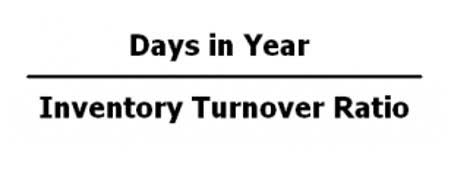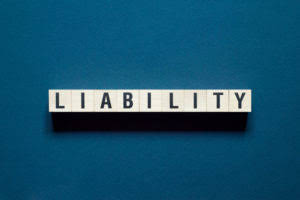
This reduction in retained earnings can impact a company’s future growth prospects. The retained earnings account serves as a source of internal financing for future projects https://www.bookstime.com/ and initiatives. By retaining earnings, companies can accumulate capital to fund research and development, marketing campaigns, acquisitions, or capital expenditures.
What Is the Difference Between a Stock Dividend and a Cash Dividend?
- It’s important to note that retained earnings are cumulative, meaning the ending retained earnings balance for one accounting period becomes the beginning retained earnings balance for the next period.
- This formula calculates the earnings a business retains at the end of an accounting period, factoring in any profits (net income) and dividends distributed to shareholders.
- This line item reports the net value of the company—how much your company is worth if you decide to liquidate all your assets.
- Positive retained earnings signify financial stability and the ability to reinvest in the company’s growth.
- Retained earnings play a substantial role in this equation, as they are often the largest component of shareholder equity for established companies.
For instance, if a company declares a 10% stock dividend and an investor owns 100 shares, they will receive an additional 10 shares as dividend. The decision to pay dividends and the amount to be paid depend on various factors, including the company’s profitability, cash flow, capital requirements, and growth prospects. On the other hand, retained earnings represent the accumulated profits that a company has retained or reinvested back into the business. These earnings are not distributed to shareholders but are instead kept within the company to finance growth initiatives, repay debt, or build cash reserves.
How to Increase the Par Value of a Stock

A company may issue a stock dividend rather than cash if it doesn’t want to deplete its cash reserves. When the small stock dividend is declared, the market price of $5 per share is used to assign the value to the dividend as $250,000 — calculated by multiplying 500,000 do dividends decrease retained earnings x 10% x $5. When a company issues additional stock shares for any reason, the result is stock dilution. More shares in circulation means a reduction in the earnings per share (EPS) of the existing shares, and in the ownership percentage held by each current shareholder.
Example of a stock dividend calculation
Because dividends are issued from a company’s retained earnings, only companies that are substantially profitable issue dividends with any consistency. Notice that retained earnings is impacted not at the time of payment, but at the time the dividends were declared – July 18. A dividend-paying stock generally pays 2% to 5% annually, whether in cash or shares. When you look at a stock listing online, check the “dividend yield” line to determine what the company has been paying out. When a stock dividend is issued, the total value of equity remains the same from the investor’s and the company’s perspectives. However, it’s not a good look for a company to abruptly stop paying dividends or pay less in dividends than in the past.

Typically, the net profit earned by your business entity is either distributed as dividends to shareholders or is retained in the business for its growth and expansion. The net effect of the stock dividend is simply an increase in the paid-in capital sub-account and a reduction of retained earnings. When dividends are actually paid to shareholders, the $1.5 million is deducted from the dividends payable subsection to account for the reduction in the company’s liabilities. Assume company ABC has a particularly lucrative year and decides to issue a $1.50 dividend to its shareholders. If ABC has 1 million shares of stock outstanding, it must pay out $1.5 million in dividends.

Large Stock Dividend Accounting
The beginning period retained earnings are thus the retained earnings of the previous year. As an investor, you would be keen to know more about the retained earnings figure. For instance, you would be interested to know the returns company has been able to generate from the retained earnings and if reinvesting profits are attractive over other investment opportunities. For instance, a company may declare a $1 cash dividend on all its 100,000 outstanding shares. Stocks that issue dividends tend to be fairly popular among investors, so many companies pride themselves on issuing consistent and increasing dividends year after year. In addition to rewarding existing shareholders, the issuing of dividends encourages new investors to purchase stock in a company that is thriving.
- This is because reinvestment of surplus earnings in the profitable investment avenues means increased future earnings for the company, eventually leading to increased future dividends.
- A business entity can have a negative retained earnings balance if it has been incurring net losses or distributing more dividends than what is there in the retained earnings account over the years.
- Assume company ABC has a particularly lucrative year and decides to issue a $1.50 dividend to its shareholders.
- The relationship between dividends and retained earnings is intertwined and plays a crucial role in shaping a company’s financial position and its ability to grow and generate value for shareholders.
- While a cash dividend reduces stockholders’ equity, a stock dividend simply rearranges the allocation of equity funds.
- In some industries, revenue is called gross sales because the gross figure is calculated before any deductions.
It shows a business has consistently generated profits and retained a good portion of those earnings. It also indicates that a company has more funds to reinvest back into the future growth of the business. Retained earnings, on the other hand, refer to the portion of a company’s net profit that hasn’t been paid out to its shareholders as dividends.

Where Is Retained Earnings on a Balance Sheet?
Whether a cash dividend or a stock dividend is better depends on the shareholder and their financial profile. If an individual is dependent on an income stream, then a cash dividend would be a better option. On the other hand, if a shareholder is not in need of cash right away, a stock dividend is a better option as it allows for further investment in a company that can balloon into bigger payouts in the future. Stockholder equity also represents the value of a company that could be distributed to shareholders in the event of bankruptcy. If the business closes shop, liquidates all its assets, and pays off all its debts, stockholder equity is what remains. It can most easily be thought of as a company’s total assets minus its total liabilities.
